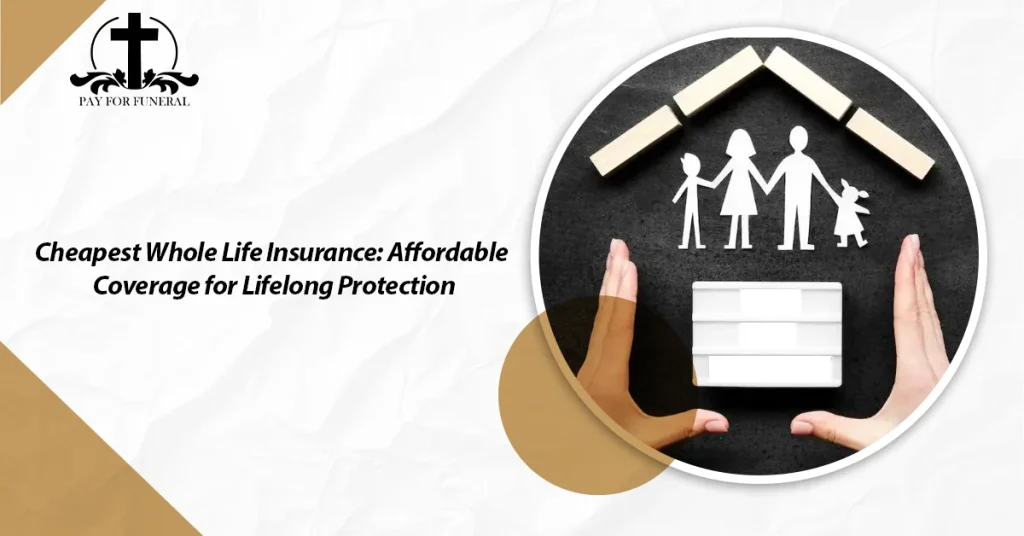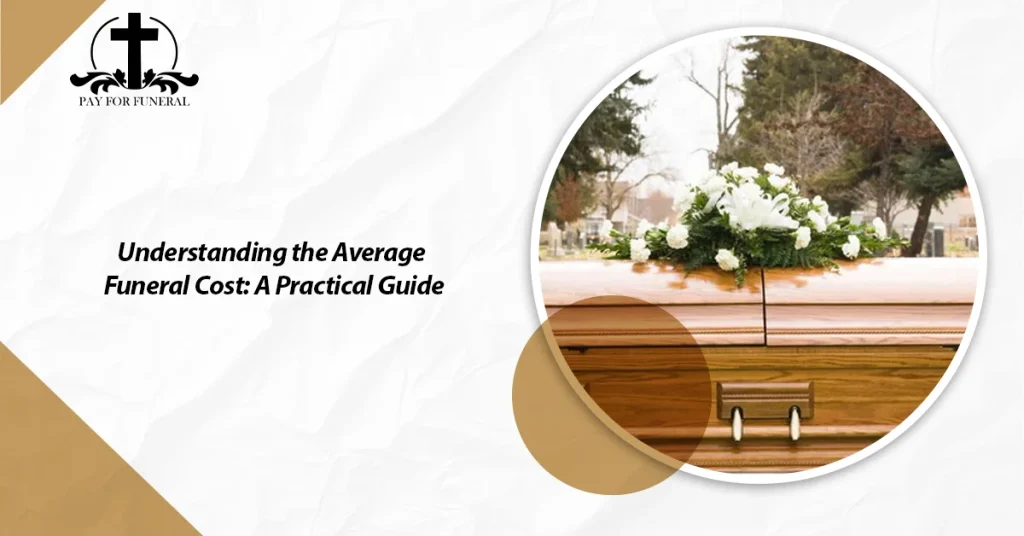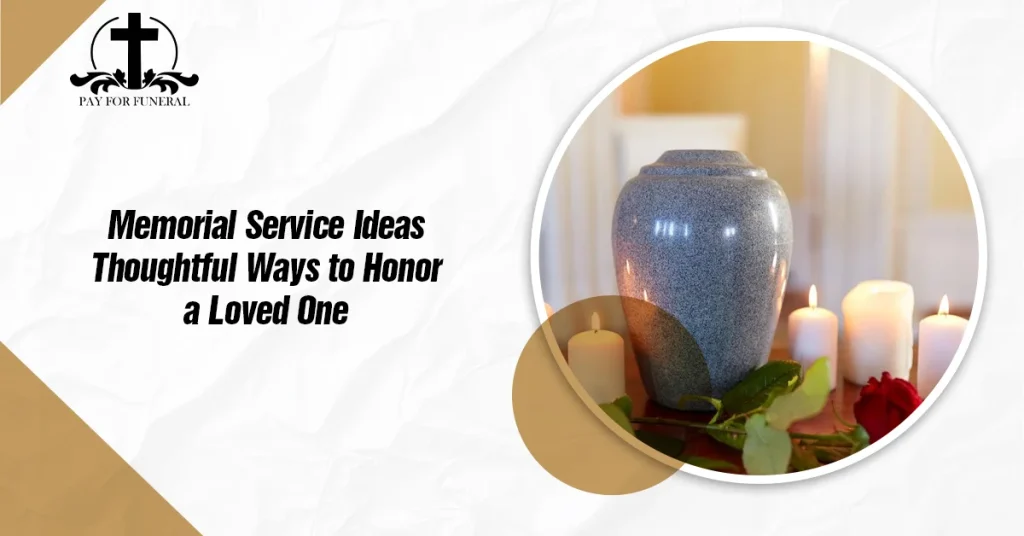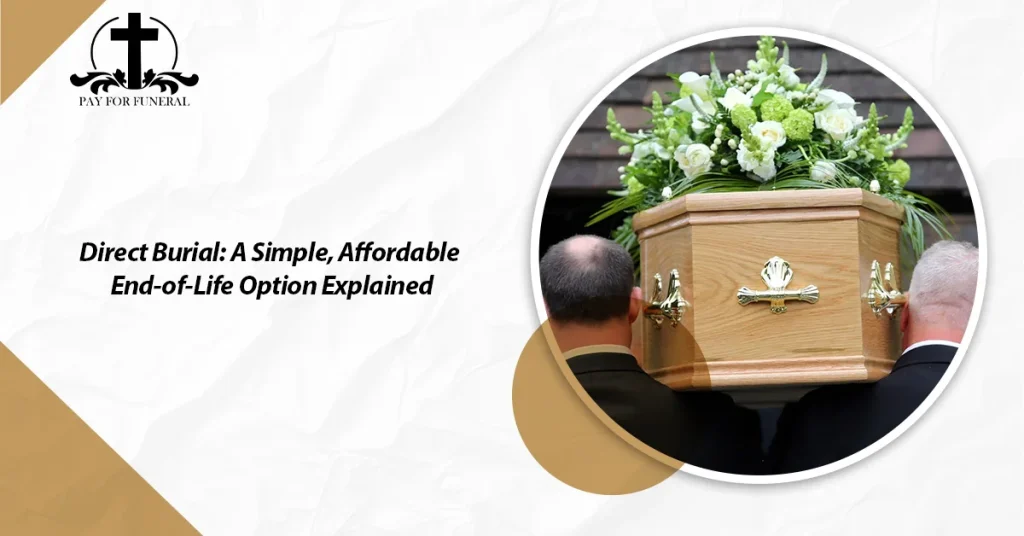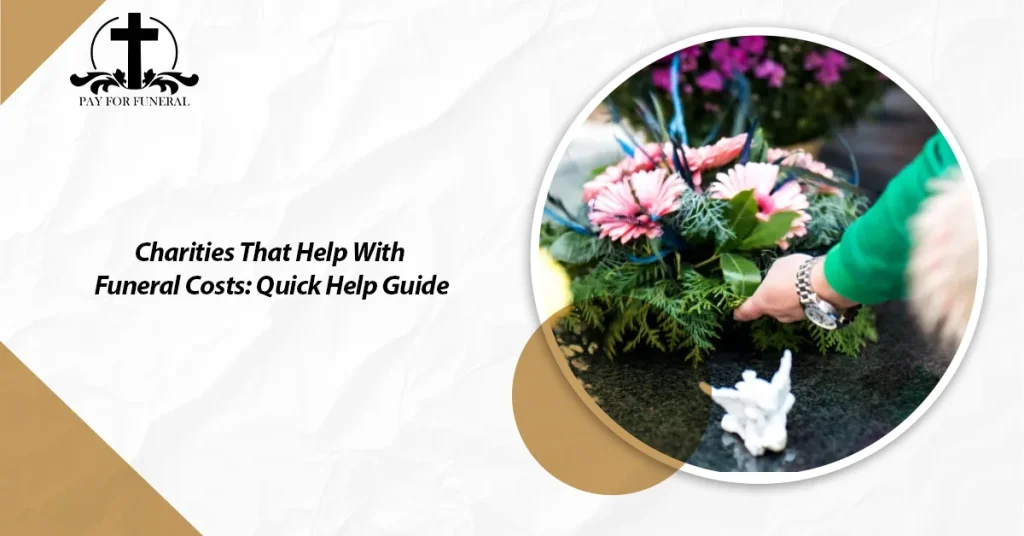Introduction
Thinking about your own funeral can be emotional but planning ahead is one of the kindest things you can do for your loved ones. It takes away the burden of tough decisions during a time of grief and ensures your wishes are respected.
That’s where a funeral planning checklist becomes incredibly helpful. With the right steps laid out clearly, you can reduce stress, save time and money, and give peace of mind to your family. Whether you’re considering how to plan your own funeral checklist, interested in advance funeral planning, or simply looking for a free funeral planning guide, this resource is here to help.
In this guide, you’ll find easy-to-follow sections on pre-planning decisions, supporting your family, organizing logistics, and handling key legal details. It’s designed to help you plan with care, clarity, and confidence so everything is in place when it matters most.
Why Every Family Needs a Funeral Planning Checklist
Planning a funeral in advance may feel uncomfortable, but it’s a crucial step that brings peace, clarity, and comfort during a difficult time. When families are grieving, making decisions about services, costs, and legal documents can feel overwhelming. A well-prepared funeral planning checklist helps take that weight off their shoulders.
Get Free Quotes
Customized Options Await
By having a clear plan in place, you ensure your final wishes are known and respected. It also reduces emotional stress for your loved ones, who won’t be left guessing what you would have wanted. On a financial level, advance funeral planning allows you to compare options, avoid rushed decisions, and possibly save money.
Using resources like a funeral planning center or following guidance from a funeral planning authority can help you make informed choices. These tools offer support and structure throughout the planning process. A solid funeral checklist for families becomes a gift of a loved one that makes a hard day a little easier by taking care of the details ahead of time.
How to Plan Your Own Funeral Checklist
Taking time for advance funeral planning may feel unusual, but it’s a thoughtful and practical way to ease the future for your family. Here’s a simple pre-need funeral planning checklist to help guide you through the process:
- Decide Between Burial or Cremation
Start by choosing whether you prefer burial or cremation. This is a personal decision that can impact costs, service style, and location. - Select the Type of Service You Want
Would you like a traditional funeral, a memorial service, or a celebration of life? Decide on the tone, location, and whether you’d like religious elements, music, or readings. - Choose a Funeral Home or Planning Center
Contact a funeral planning center or local provider to discuss your preferences and costs. They can walk you through package options and answer questions. - Record and Store Your Wishes
Write down your choices and any special requests. Keep this information in a safe place and share it with a trusted family member or attorney. - Gather Important Documents
Collect key documents like your will, insurance policy, and any prepaid funeral contracts. Having everything together saves time later. - Use a Free Funeral Planning Guide
To make it even easier, download a free funeral planning guide that walks you through each step and ensures nothing is missed.
By organizing your plans now, you’re creating a lasting gift of clarity and relief for your loved ones.
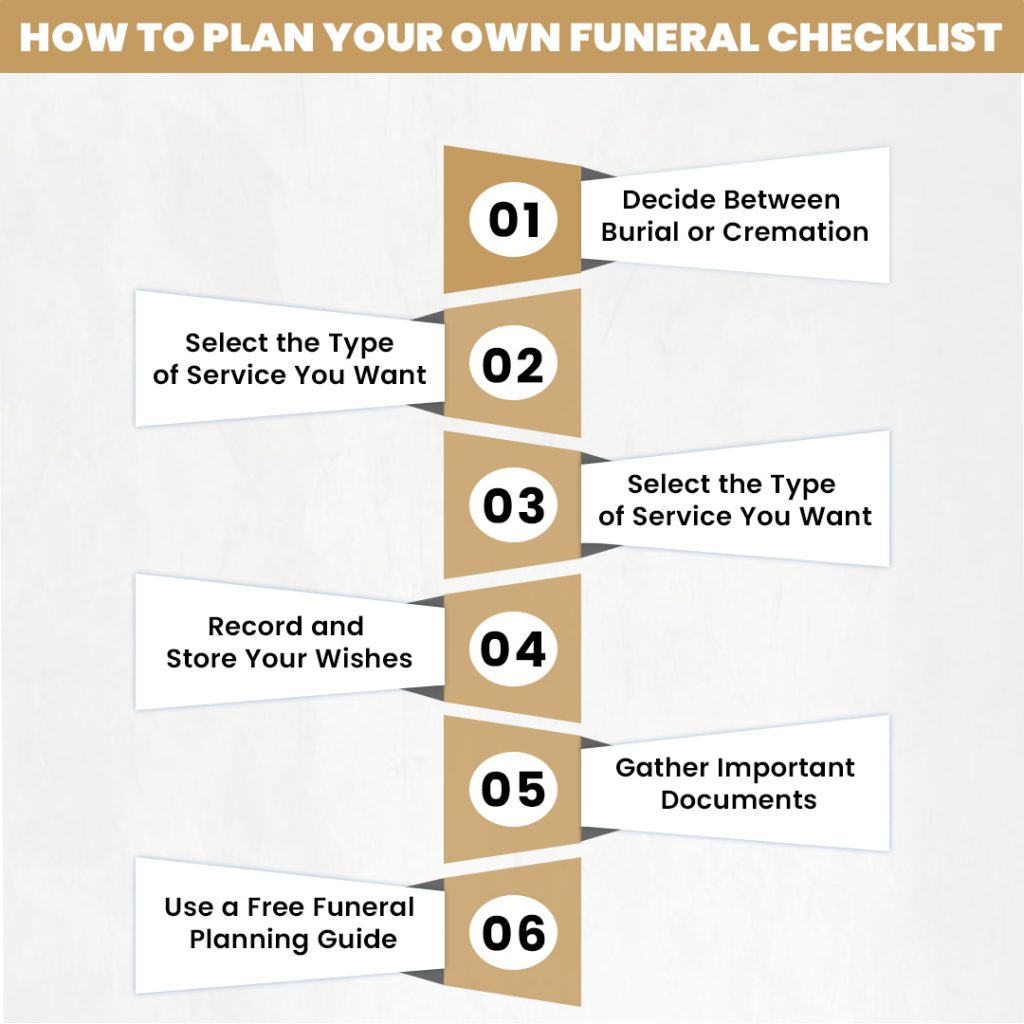
How to Organize a Funeral for a Loved One
Losing someone close is heartbreaking, and the days that follow can feel overwhelming. Having a plan can help. Here’s how to manage key steps using a funeral planning checklist, especially if you’re handling arrangements after the death of a spouse or another family member.
- Take Immediate Steps After Death
Contact a doctor or coroner to officially pronounce the death. If your loved one passed at home, you’ll need to inform authorities and arrange transportation. - Select a Funeral Home or Planning Center
Choose a trusted funeral home or funeral planning center. If your loved one lived in a specific area, like funeral planning in Oceanside, find a provider familiar with local customs and laws. - Secure Legal Documents
Gather the will, identification, social security number, and any pre-need funeral planning checklist they may have completed. These documents will help you carry out their wishes and manage necessary tasks like death certificates and benefit claims. - Communicate with Family
Keep close family members informed and involved. Share updates, delegate tasks, and provide emotional support as needed. - Follow a Checklist After the Death of a Spouse
Use a tailored checklist after the death of a spouse to manage both the emotional and practical details from canceling services to handling estate matters.
Funeral planning is never easy, but being prepared and organized helps make the process more manageable, allowing you to focus on honoring your loved one’s memory with care and respect.
Best Funeral Planning Checklist: Step-by-Step Breakdown
A well-structured funeral planning checklist helps ensure that nothing important is missed during a difficult time. Whether you’re doing advance funeral planning for yourself or organizing a service for a loved one, this free funeral planning guide offers clear and thoughtful steps.
Step 1 – Notify Family and Secure Legal Documents
Start by informing close family members and friends about the passing. Then, gather all necessary legal documents such as the will, birth certificate, insurance policies, and any existing pre-need funeral planning checklist or funeral agreements. This information is crucial for making timely arrangements and avoiding delays.
Step 2 – Choose a Funeral Home or Director
Selecting a trusted funeral home or funeral planning center is a key decision. If you’re located in a specific area like funeral planning in Oceanside, it helps to choose a provider familiar with local customs and regulations. A funeral director can guide you through service options, transportation, and paperwork.
Step 3 – Decide on the Type of Service
Choose the kind of ceremony that reflects your or your loved one’s wishes. Options may include a traditional funeral, memorial service, graveside gathering, or a celebration of life. This part of the funeral checklist for families helps personalize the goodbye and make it meaningful.
Step 4 – Coordinate Burial or Cremation
Next, decide whether to proceed with burial or cremation. This is often already outlined in an advance funeral planning document, but if not, it should be discussed with the family. Consider cemetery plots, urns, or memorial keepsakes based on the choice made.
Step 5 – Organize Service Details (venue, speakers, music)
Choose the location for the service whether it’s at a funeral home, place of worship, or another meaningful venue. Select speakers, readings, and music that best honor the person’s life. This part of the checklist helps ensure the event feels personal and respectful.
Step 6 – Post-Funeral Tasks (thank you notes, account closures)
After the service, use a checklist to manage final tasks. These include sending thank-you notes, notifying banks and agencies, closing accounts, and submitting paperwork for insurance or veterans’ benefits. A checklist after the death of a spouse is invaluable for these important details.
Following a step-by-step funeral planning checklist brings peace of mind, knowing everything is handled with care. Whether you’re planning ahead or navigating a recent loss, this structured approach makes a difficult time more manageable.
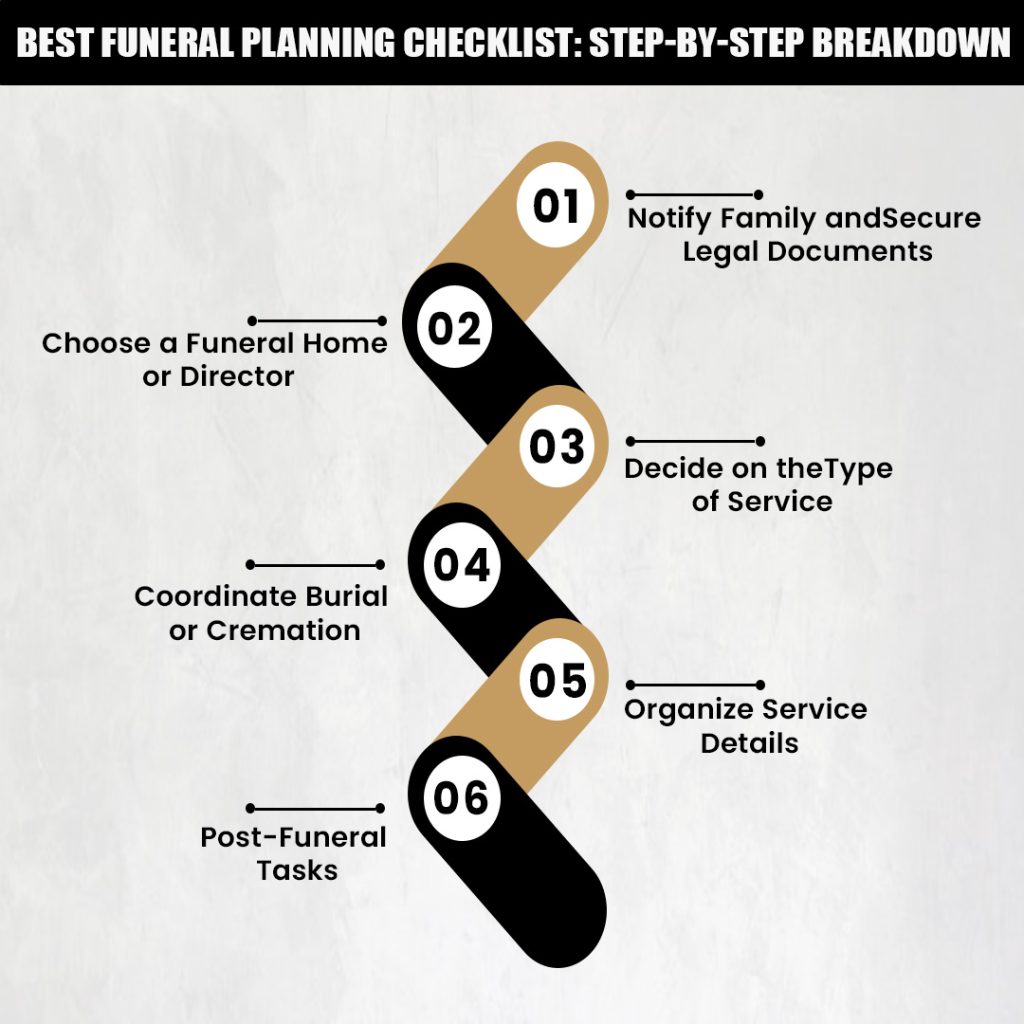
Funeral Checklist for Families: Who Does What?
When a loved one passes, there are many details to manage, and it’s helpful to divide responsibilities using a clear funeral checklist for families. Delegating tasks not only eases the burden but also ensures that everything gets done smoothly and respectfully.
- Logistics Coordinator: This person works closely with the funeral home or funeral planning center to manage transportation, scheduling, and venue setup.
- Family Communicator: Assign someone to notify extended family, friends, and community members, and to coordinate guest lists or social media announcements.
- Paperwork Manager: Someone should handle the legal and financial paperwork, including death certificates, insurance claims, and any documents related to pre-need funeral planning checklists.
Working with a trusted funeral planning authority can make this process much easier. They offer expert guidance, provide templates, and help families avoid common mistakes. Whether you’re using a free funeral planning guide or seeking professional help, the key is communication and shared responsibility.
Funeral Planning in Oceanside: Local Considerations
If you live in or near Oceanside, California, there are some unique things to keep in mind when planning a funeral. Local laws, cemetery rules, and coastal preferences may influence your choices.
- Permits and Documentation: Oceanside may require specific permits for burial or cremation. A funeral planning center in Oceanside can help you navigate these requirements.
- Venue Options: From beachside memorials to traditional churches, Oceanside offers a range of service locations. Consider what setting best reflects your or your loved one’s wishes.
- Local Providers: Contacting funeral homes or planning centers in Oceanside ensures that you receive support tailored to your area’s customs and regulations.
If you’re searching for funeral planning in Oceanside, it’s a good idea to speak directly with a local provider. They can walk you through the process, provide estimates, and help customize services that meet both emotional and legal needs.
Download or Create Your Free Funeral Planning Guide
Planning a funeral doesn’t have to be overwhelming, especially when you have the right tools. A free funeral planning guide can give you peace of mind and ensure no important detail is missed. Whether you’re doing pre-need planning for yourself or organizing a service for a loved one, having a clear, step-by-step checklist makes the process smoother and less stressful.
We recommend using a printable or downloadable funeral planning checklist (PDF) that includes:
- Sections for personal preferences (burial or cremation, type of service)
- A place to list important contacts and documents
- Tasks to complete before, during, and after the funeral
- Notes for special requests, music, speakers, and more
This guide is perfect for both advanced funeral planning and urgent situations when time is limited. Having everything written down helps families stay organized and focused during emotionally challenging moments.
Take this simple step today to protect your loved ones from uncertainty tomorrow.
Conclusion
Taking the time to prepare with a clear funeral planning checklist offers comfort, clarity, and peace of mind for you and your family. Whether you’re exploring advance funeral planning or need to organize a service quickly, having a step-by-step guide ensures nothing is overlooked during an emotional time.
Don’t wait until a crisis forces rushed decisions. Instead, begin the process today with our free funeral planning guide or reach out to a funeral planning center near you. Trusted professionals and tools like the funeral planning authority can make all the difference in guiding you through this important journey.
Start planning today. Your loved ones will thank you tomorrow.
Frequently Asked Questions
What should you not do when planning a funeral?
Avoid rushing decisions, overspending on services, or forgetting to handle legal documents properly.
How to prepare for a funeral checklist?
Begin by gathering key documents, choosing the type of service, and organizing guest communication.
What are the steps to planning a funeral?
Notify family, complete legal paperwork, organize the service, arrange burial or cremation, and manage post-funeral tasks.
How do I set up a funeral plan?
Work with a funeral home, legal advisor, or insurance provider to outline your wishes and finalize arrangements.
How quickly do you plan a funeral?
Most funerals are planned within 3 to 7 days, depending on family preferences and service details.


